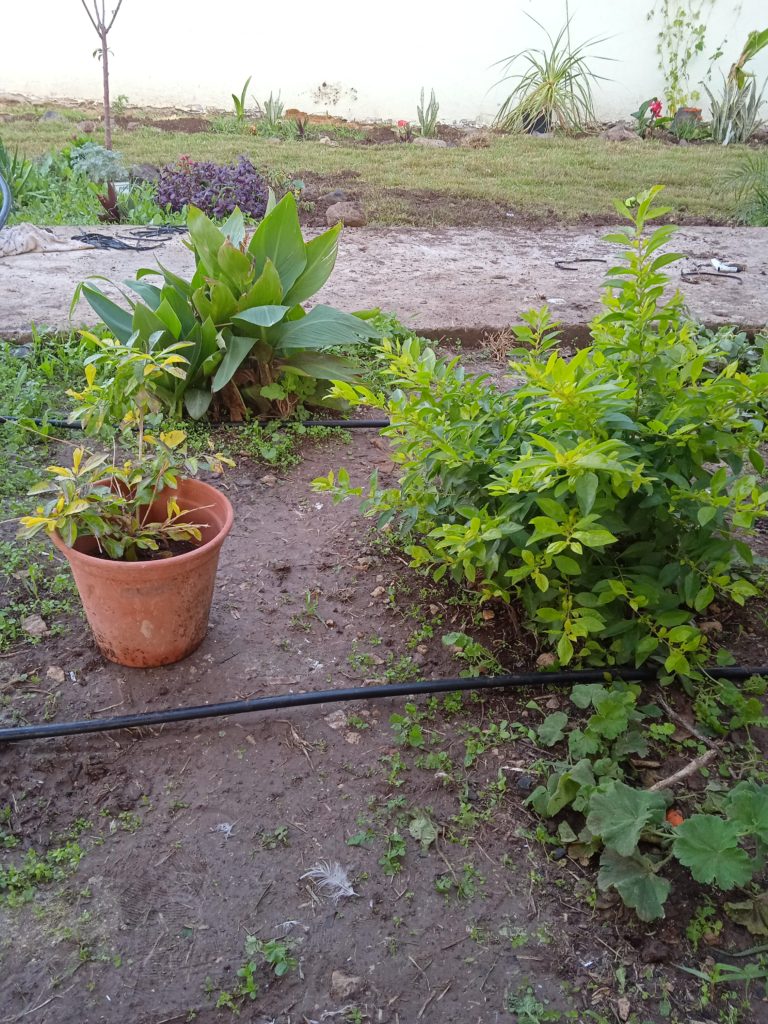As you know, I enjoy gardening and I often notice how the natural principles of growth and development express in the garden just as in parenting.

Recently, I planted a number of flower bulbs, some in the ground, and others layered lasagna style in two pots. In each pot I planted the same bulbs in the same pattern. Once I finished, I placed the two pots three feet from one another, one on each side of our patio bench swing. It became quickly apparent that one was getting more sun than the other, as one grouping of bulbs was sprouting much more quickly. When I noticed this, I placed the lagging bulbs in the sun to help them catch up. I took this picture after it had been catching up in full sun over a week.

Every child is born with potential. Some get the sunlight and water they need in the ideal proportions, and their beautiful growth is visible. Others who may have the same potential don’t have their needs met in the same way, and as a result they appear more limited. However, the limitation wasn’t inherent in who they are, but in what resources were available to them.
Here’s another illustration. These two plants were identical when I purchased them. One was planted right away, the other was transferred to a pot while I decided where its long-term location would be. The one in the ground not only had more light, even more significantly it had room to spread its roots and grew dramatically bigger in a short time.

Roots need to reach and seek new footholds to become stronger and more established. I’ve noticed that many parents and educators have a lot of fear about giving children room to grow. While hopefully everyone will agree that children need love and warmth, many will argue that it’s dangerous to allow children unsupervised time.
My twenty year old daughter is a dorm counselor in a seminary, and the girls were complaining that they came to Israel for the experience, and instead are spending much of their free time doing the mounds of homework they are assigned. She went to the dorm mother to ask about why the girls are given so much homework. Before she told me the answer, I interrupted and said, “Let me guess! Because if they aren’t kept busy they’ll get into trouble.”
Yep, that’s exactly what my daughter confirmed she was told.
For years I’ve said that kids need to learn to manage their time, and they can only do that by being allowed to have unstructured time. Sometimes that will be filled productively and sometimes the person will be bored. Boredom isn’t dangerous. Boredom is a learning opportunity.
What’s dangerous is not allowing people room for personal expansion. If the potted plant above was left in a pot long term, it would never look much bigger or better than it does right now – let alone become the very big and lush bush it’s genetically intended to be.
Learning to manage one’s own time is a skill that develops over time. You can’t expect anyone to suddenly have lots of time on their hands and to make good use of it, if he hasn’t had opportunities to take responsibility for his time prior to that.
When I plant something in my garden, I don’t know how big it’s going to get or how well it’s going to grow. Sometimes it gets too big for the space I allotted it, and I move it to where it will have more space. Some may later need to be carefully pruned.
But I can’t plant something in the garden and not give it room to put down its roots. That will compromise the inherent potential of the plant. The roots are what provide support for the visible strength and growth of the plant, and strong roots are what support our children for their entire lives.
Avivah
Your garden looks magnificent. You are obviously finding amazing scope your green dreams.
I am so thrilled for you!
(oh, and I love the message of this post!)
Thanks, Naomi! I’m finding my balance between functionality and aesthetics. The bed in the picture has a papaya, loquat, two kinds of passion fruit, cassava and about six tomato plants in addition to the ornamentals.